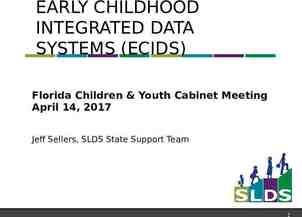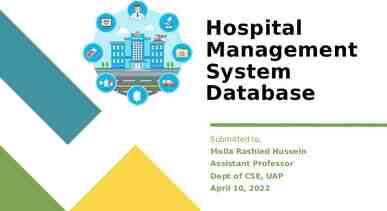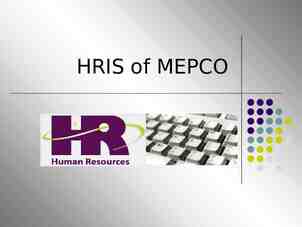CHAPTER 6 Recruiting and Labor Markets SECTION 2 Jobs and Labor
27 Slides1.64 MB

CHAPTER 6 Recruiting and Labor Markets SECTION 2 Jobs and Labor PowerPoint PowerPoint Presentation Presentation by by Charlie Charlie Cook Cook The The University University of of West West Alabama Alabama

The Importance of Recruiting Recruiting Is the process of generating a pool of qualified applicants for organizational jobs Seeks to improve workforce quality for competitive advantage: Cost of recruiting Quality of recruited candidates Cost of unfilled jobs 6–2

FIGURE 6–1 Integrating Recruiting Components 6–3

Strategic Recruiting and HR Planning Effective Recruiting Requires: Knowing the business and industry Identifying keys to success in the labor market Cultivating networks and relationships Promoting the “company brand” Using metrics to measure recruiting effectiveness Identifying talent before it is needed Training Recruiters and Managers Recruiting-related job skills Diversity and sensitivity skills Ethical recruiting behaviors 6–4

Labor Markets Labor Markets The external supply pool from which organizations attract their employees Unemployment Rates and Applicant Population Low unemployment creates competition for employees, raising labor costs. High unemployment results the availability of more applicants and more qualified applicants. 6–5

FIGURE 6–2 Labor Market Components 6–6

FIGURE 6–3 Considerations for Determining Applicant Populations 6–7

Reaching the Applicant Population Recruiting Decisions Recruiting Method Recruiting Message Applicant Qualification s Administrati ve Procedures 6–8

Different Labor Markets and Recruiting Geographic Labor Markets Global Labor Markets Labor Markets Industry and Occupational Labor Markets Educational and Technical Labor Markets 6–9

Strategic Recruiting Decisions Organization-Based Recruiting Source Choices: Internal vs. External Recruiting Nontraditional Sample Workers vs. Sample Outsourced Recruiting Strategic Sample Recruiting Decisions Recruiting Presence Sample and Image Training of Sample Recruiters Recruiting and EEO: Regular vs. Sample Flexible Staffing Sample Diversity Considerations Realistic Job Sample Previews 6–10

Internet Recruiting Effects of Internet Recruiting Adjusting to new recruiting approaches Identifying new types of recruiting for specific jobs Training for managers and HR recruiters 6–11

Internet Recruiting (cont’d) E-Recruiting Places Internet Job Boards Professional/ Career Websites Employer Websites 6–12

Recruiting and Internet Social Networking Social Networking Recruiting Advantages: Allows job seekers to connect with employees of potential employers Allows employers to engage in social collaboration by joining and accessing social technology networks to help applicants post resumes and complete applications online 6–13

Recruiting Using Special Technology Means Internet Recruiting Tools Blogs E-Video Twitter 6–14

Legal Issues in Internet Recruiting The use (or misuse) of screening software Collection of federally required applicant information Exclusion of protected classes from the process Legal Issues in Internet Recruiting Proper identification of “real” applicants Maintaining confidentiality and privacy 6–15

Internet Recruiting Advantages Disadvantages Recruiting cost savings Recruiting time savings Expanded (global) pool of applicants Better targeting of specific audiences More unqualified applicants Additional work for HR staff Many applicants are not seriously seeking employment Access limited or unavailable to some applicants Privacy of information and discrimination issues 6–16

External Recruiting Media Sources Competitive Recruiting Sources Employment Agencies External Recruiting Sources Labor Unions Job Fairs Educational Institutions 6–17

FIGURE 6–5 Advantages and Disadvantages of External Recruiting 6–18

FIGURE 6–6 What to Include in an Effective Recruiting Ad 6–19

FIGURE 6–7 College Recruiting: Considerations for Employers 6–20

Internal Recruiting Employee Databases Job Postings Internal Recruiting Sources Former Employees and Applicants Promotions and Transfers CurrentEmployee Referrals 6–21

FIGURE 6–8 Advantages and Disadvantages of Internal Recruiting 6–22

Recruiting Evaluation and Metrics Evaluating Recruiting Quality and Quantity Evaluating Recruiting Satisfaction Evaluating Recruiting Efforts Evaluating the Time Required to Fill Openings Evaluating the Cost of Recruiting 6–23

FIGURE 6–9 Recruiting Measurement Areas 6–24

Recruiting Metrics General Recruiting Process Metrics Yield Ratios Selection Rate Acceptance Rate Success Base Rate 6–25

FIGURE 6–10 Sample Recruiting Evaluation Pyramid 6–26

Increasing Recruiting Effectiveness Technical Approaches Resume mining software Applicant tracking Employer career websites Internal mobility tracking system Non-Technical Approaches Personable recruiters Emphasizing positives about the job and employer within a realistic job preview Fair and considerate treatment in the recruiting process Enhancing applicants’ perceived fit with the organization 6–27






